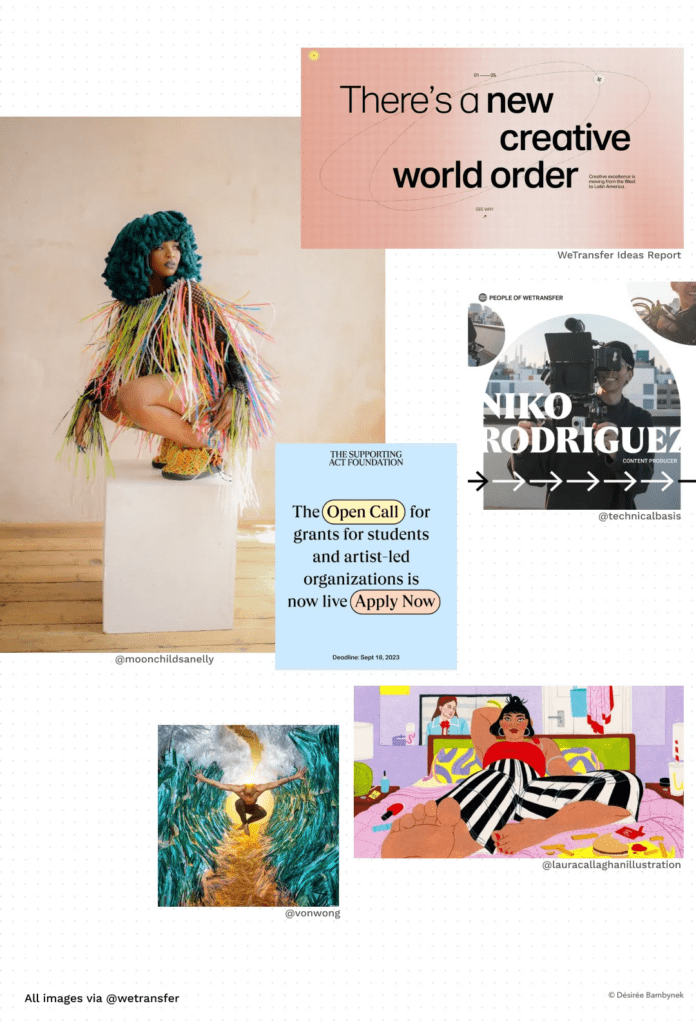There is real customer-centricity and fake customer-centricity. Many companies perceive themselves in the first category, but they are fooling themselves. What does it take to really put your customer first?
Going all-in on your customer is a choice that has profound implications in how your business operates — and how it is valued by its customers.
Let’s look at one such brand. WeTransfer have made their customer their priority. WeTransfer may just be a platform to transfer files online, and yet they have a put all their chips on creatives and creators.
Energizing the We in WeTransfer
First of all, WeTransfer is very clear on who their customer is: the creative. This target group is wide enough to provide growth opportunity, but specific enough to avoid generic messaging that happens when marketing to the mainstream.
This focus on a specific customer group, the creative individual or professional in a creative-adjacent field, is what drives their business. Their decisions, how they organize themselves, what they decide to develop, and how they communicate — everything begins with the customer in mind.
This translates to the ability to develop exceptional products, great brand experience, a smart business model, and unparalleled clarity when it comes to evaluating new opportunities.
It’s also a great case for strategically using focus as a business advantage.
- They have a clear mission because they are focused on a specific customer, the creative.
- That also means that they have a clear message, which informs how they communicate on brand channels and market their offering.
- They can make smart decisions about expanding their portfolio: WePresent is their digital artist’s platform and features creatives across the world.
- They really go beyond marketing, creating brand channels with a clear added value. For example, their Instagram channel is used to blend product benefits with spotlighting creatives and creators.

Second, and this is an assumption, but it seems that they grow their business not by looking at technology trends, but by taking a customer’s perspective. “What does the creative need that she is not finding?” might be a question that may have resulted in their vertical WePresent, their digital artist’s platform.
Key to real customer-centricity is listening and dialog with your customers.
It’s invaluable and should be an ongoing process of asking, listening, testing, receiving feedback, improving etc.
How we listen
Listening through feedback
Apart from the usual tools such as feedback forms via email, chat or website, customer surveys are a great way to tap into what is going on with your customers.
But there are surveys and there are really good surveys. Really good surveying gets you actionable results when you
a) look beyond the obvious and try to uncover the hidden truths.
b) you have built a loyal tribe of brand fans that you can tap into to give your quantitative data depth and psychological color. Ideally, you have invested in community advocacy regularly, so this is where you will reap the rewards of that.
Remember: Real insights speak to an emotional state.
Why? Because that’s what drives behavior and decisions. Frustration, anxiety, hope, overwhelm, curiosity — you want to find out what thoughts and feelings drive your customers in this point in time.
Partners can be fans, too. Pooling research and insights from companies you work with is a great way to get that wide-as-possible perspective. And maybe even divest the costs a bit.
Listening through observation
Social listening is another way to really learn about your customer. What topics are being discussed in posts and comments? What issues are hitting a nerve? Look for insights beyond your category and market, too. A single person can participate or be impacted by a variety of industries, from banking to personal fulfillment. Most of the today’s strongest sociological or psychological themes are independent of industry, profession or belief.
Listening through data
Connecting customer feedback to data points gives insight into deeper, unconscious behavior patterns. Too often, only one or the other is practiced regularly. It’s together that the most interesting insights can come to the surface. The important thing is not getting lost in a jungle of unnecessary and overwhelming data. Simplicity is key.
Sharing back to the group
WeTransfer’s Ideas Report is a great example of customer listening and generating insights for new opportunities, as well as an invaluable contribution to the creative community. Furthermore, it’s a great PR tool, too. Win-win.
Another benefit of sharing what you’ve learned with your customers is that it validates your contribution and builds trust. Your brand becomes part of the group, or a source that interconnects the group. This is extremely valuable and should never be discounted.
All-in
This kind of all-in mentality might sound too radical for many that build their business on catering to the mainstream public, afraid of missing out on a target group. But when you’re targeting everyone, you’re not speaking to anyone in particular. One of two things might happen then:
- Your message is vague because you need to address many, sometimes conflicting, concerns or needs at once.
- Your resources are spread thin because you’re doing everything, everywhere at once.
The hardest part of business is deciding what to focus on and committing to it.
If that focus is not part of your founding story or heritage, like is the case for WeTransfer, it’s never too late to set it. Going all-in on your customer means not only committing, but also setting the priorities and creating clarity for your entire organization and team.
In the end, it’s a choice we need to make: Is our brand the hero in our own brand story? Or is our customer the hero and we play a supporting role in her story?
Can we put our ego aside and put our customer first?